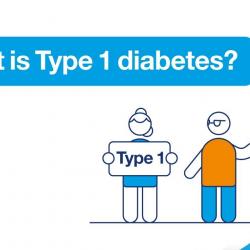To aid in the classification of type 1 diabetes
Islet Autoantibodies in Diabetes
Recently after you have been diagnosed as having diabetes but only if the healthcare professional cannot clearly determine if you have type 1 diabetes or type 2 diabetes or maturity onset diabetes of the young (MODY)
A blood sample taken from a vein in your arm
None
-
How is it used?
Islet autoantibody testing is primarily used to help distinguish type 1 diabetes from diabetes due to other causes. Islet autoantibodies are positive in type 1 diabetes and are negative in diabetes cases caused by non-autoimmune problems.
Determining which type of diabetes is present allows for early treatment with the most appropriate therapy to avoid complications from the disease. People with type 1 diabetes must frequently self-check their glucose levels and inject themselves with insulin several times a day to control the level of glucose in their blood. People with type 2 diabetes may self-check their glucose one or more times a day and may be able to control their blood glucose in a variety of ways. Some can control their glucose levels with diet and exercise, others take oral medications, and some need daily insulin injections. Insulin is not required in all forms of MODY and diagnosing it can prevent people suffering low glucose (hypoglycaemia) episodes caused by insulin injection because they were misdiagnosed as type 1 diabetes. MODY can be missed as, very much like type 1 diabetes, people may present and be picked up when young and can be lean in appearance.
-
When is it requested?
A combination of these autoantibodies may be requested when a person is newly diagnosed with diabetes and the healthcare professional wants to distinguish between type 1 diabetes and other forms of diabetes such as type 2 diabetes and MODY. In addition, these tests may be used when a person with type 2 diabetes is having great difficulty in controlling their glucose levels with standard treatments. In such a case, a positive test for an islet autoantibody can indicate that the diagnosis is type 1 diabetes and not type 2 diabetes.
-
What does the test result mean?
If ICA, GADA, IA-2A and/or ZnT8A are present in a person with symptoms of diabetes, the diagnosis of type 1 diabetes is confirmed. Likewise, if IAA is present in a child with diabetes who is not insulin-treated, type 1 diabetes is the likely cause of the diabetes.
If no islet autoantibodies are present at onset or within a few years of diagnosis, then it is unlikely that the diabetes is type 1. Some people who have type 1 diabetes will never develop detectable amounts of islet autoantibodies, but this is rare. The majority of people, 95% or more, with new-onset type 1 diabetes will have at least one islet autoantibody.
-
Is there anything else I should know?
Islet autoantibodies may also be seen in people with other autoimmune endocrine disorders such as Hashimoto thyroiditis or autoimmune Addison disease. Such individuals are then at increased risk to develop type 1 diabetes.
People who are treated with insulin injections may begin to develop antibodies directed against the exogenous insulin. The IAA test does not distinguish between these types of antibodies and the autoantibodies directed against endogenous insulin. Therefore, this test is not valid for someone who has already been treated with injections of insulin. For example, someone who was thought to have type 2 diabetes and who was treated with insulin injections cannot then have this test done to determine if he or she has type 1 diabetes.
-
Can these tests be used to diagnose diabetes?
No. Type 1 diabetes as well as other types of diabetes are screened for, diagnosed, and monitored using tests for blood glucose and/or HbA1c. The autoantibody tests can be used after diabetes is already diagnosed to help differentiate between type 1 and type 2 diabetes and MODY.
-
Do the autoantibodies ICA, IAA, GADA, IA-2A or ZnT8A destroy the beta cells?
They are associated with beta cell destruction and reflect an ongoing autoimmune process, but they are not thought to cause the damage.


